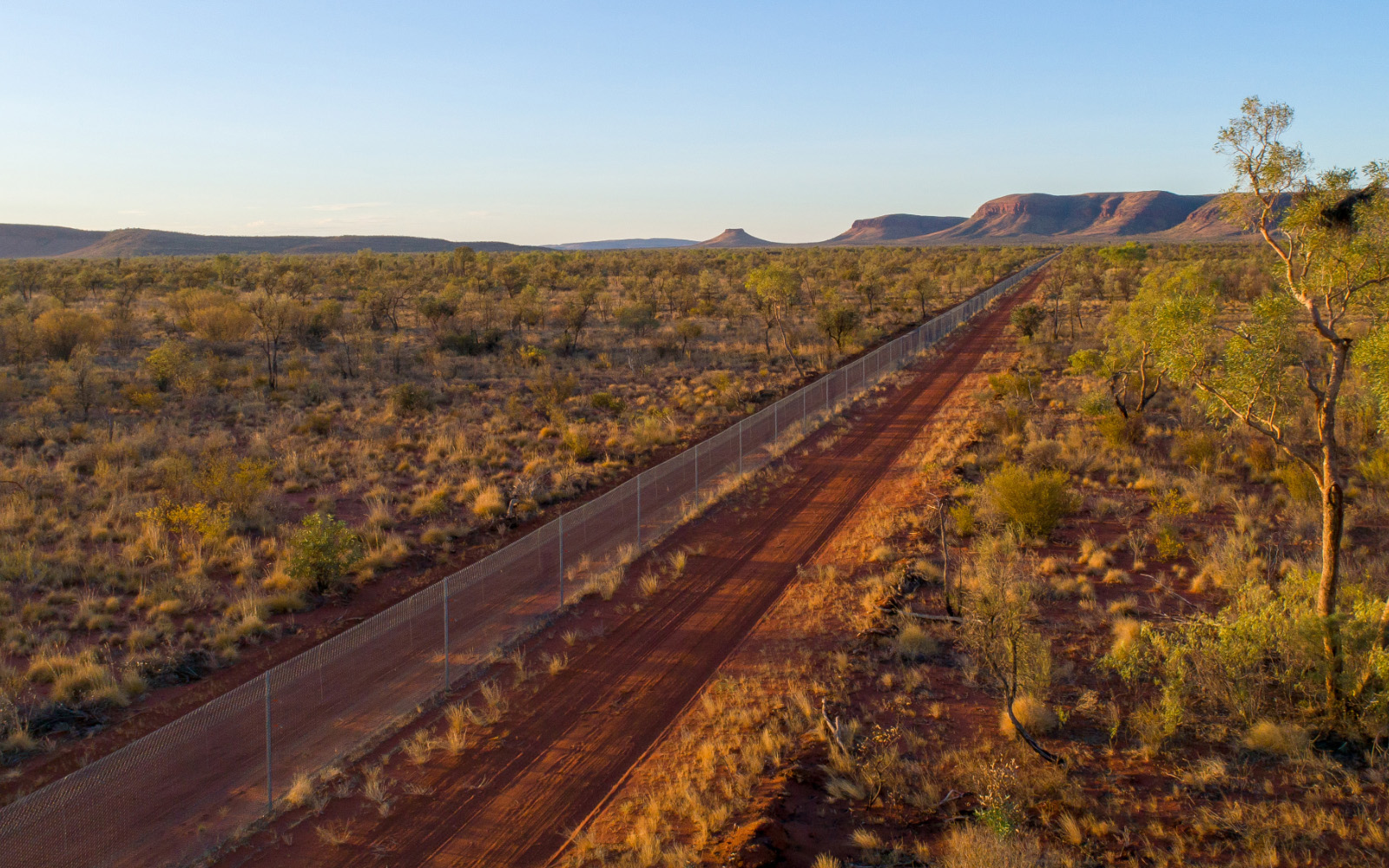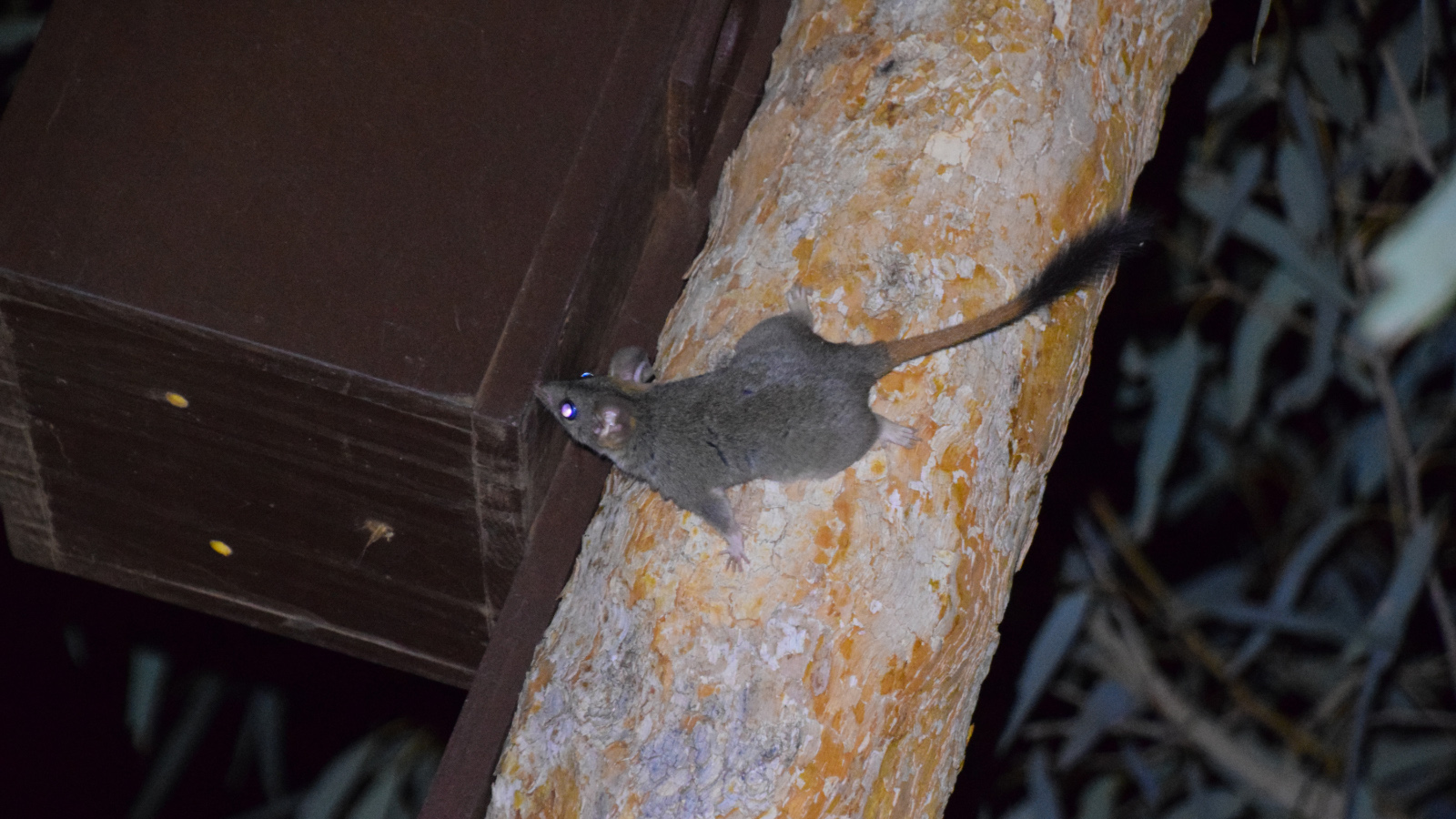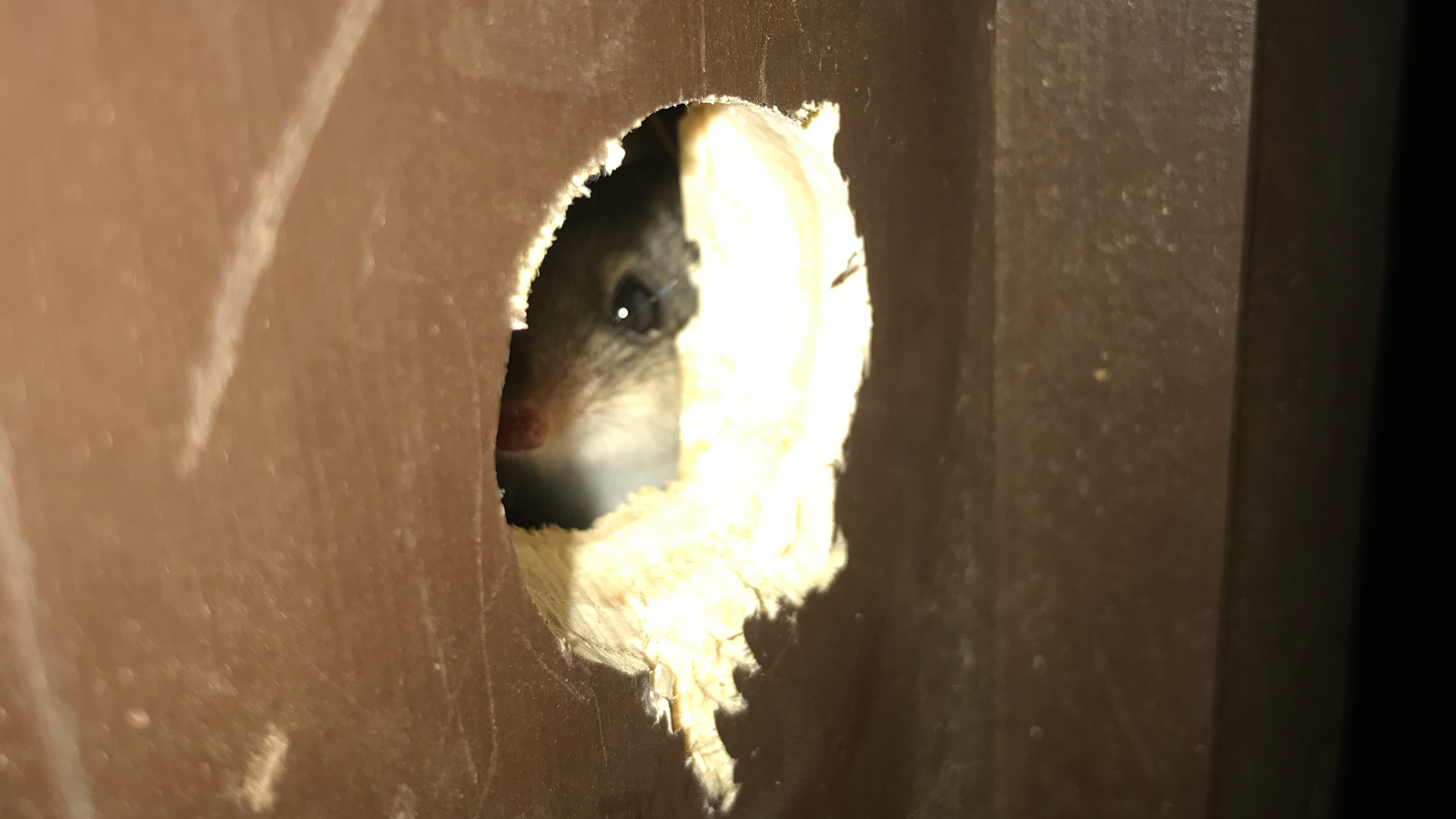They’re back! 29 locally-extinct Red-tailed Phascogales were released into the wild at AWC’s Newhaven Wildlife Sanctuary this week. The return of these rare tree-dwelling marsupials to central Australia, after a decades-long absence, marks an exciting new milestone for conservation.
Previously listed as extinct in the Northern Territory, the Red-tailed Phascogale is the latest species to be reintroduced at Newhaven as part of the country’s most ambitious wildlife restoration project. AWC plans to return at least ten nationally endangered mammal species to the sanctuary, including the Bilby, the Golden Bandicoot and the Burrowing Bettong.
A population of endangered Mala (Rufous Hare-wallaby) is already established within the 9,450-hectare feral cat- and fox-free fenced area. Stage 2 of this landmark wildlife restoration project will see the feral predator-free area expanded by a further 100,000 hectares and the populations of at least six nationally threatened mammal species more than double.
The release received national attention on the ABC. Read the story on ABC Online News or watch it by clicking below.
Red-tailed Phascogales are carnivorous marsupials in the same family as quolls and were once widespread throughout semi-arid Australia. Small and agile at around 25 centimetres in length and with a brush-tipped tail, Phascogales shelter in tree hollows during the day and emerge at night to feed on small insects and spiders, leaping from branch to branch as they hunt.
Phascogales have adopted an extraordinary high-stakes, ‘live fast, die young’ strategy for reproduction: in July, they embark on an intensive three-week breeding frenzy. The males expend so much energy during this period that they eventually collapse from exhaustion and die. By the end of winter only adult females and their young survive.
 © Brad Leue/AWC
© Brad Leue/AWC
AWC’s fenced area at Newhaven excludes cats and foxes from 9,450 hectares.
The Red-tailed Phascogale has declined because of predation by feral cats and habitat fragmentation, compounded by altered fire regimes that destroy large hollow-bearing trees needed for shelter and nest sites. The species is now extinct across 99% of its former range and disappeared from the Northern Territory before 1920. Isolated populations survive in patches of remnant wandoo and sheoak woodland in the south west of Western Australia.
 © Carly Lambert/AWC
© Carly Lambert/AWC
The Phascogales were released into specially installed nest boxes in an area with good shrub cover and hollow-bearing bloodwood trees.
In 2019, AWC and the Alice Springs Desert Park established a captive breeding program which has seen the Phascogales breeding successfully over the past 12 months. The captive population was founded by 21 animals, sourced from four different sites in Western Australia’s wheatbelt region, including from AWC’s Mt Gibson Wildlife Sanctuary.
The pioneering Phascogales were released into nest boxes at Newhaven on Monday night, in the south-eastern section of the feral predator-free area. This area is characterised by good shrub cover and connectivity between large desert bloodwood trees – habitat features which match our knowledge of the species’ historical preferences in semi-arid Australia. Over time, the Newhaven reintroduction is expected to substantially boost the population of this species.
 © Jenna Ridley/AWC
© Jenna Ridley/AWC
This Red-tailed Phascogale reintroduction will deliver a substantial boost to the population of this nationally threatened species.
AWC carries out Australia’s largest wildlife reintroduction program, re-establishing populations of threatened wildlife across our extensive network of feral predator-free fenced areas. This latest reintroduction is another important step towards restoring locally extinct mammals to Newhaven in central Australia.
Please help us restore threatened species to central Australia